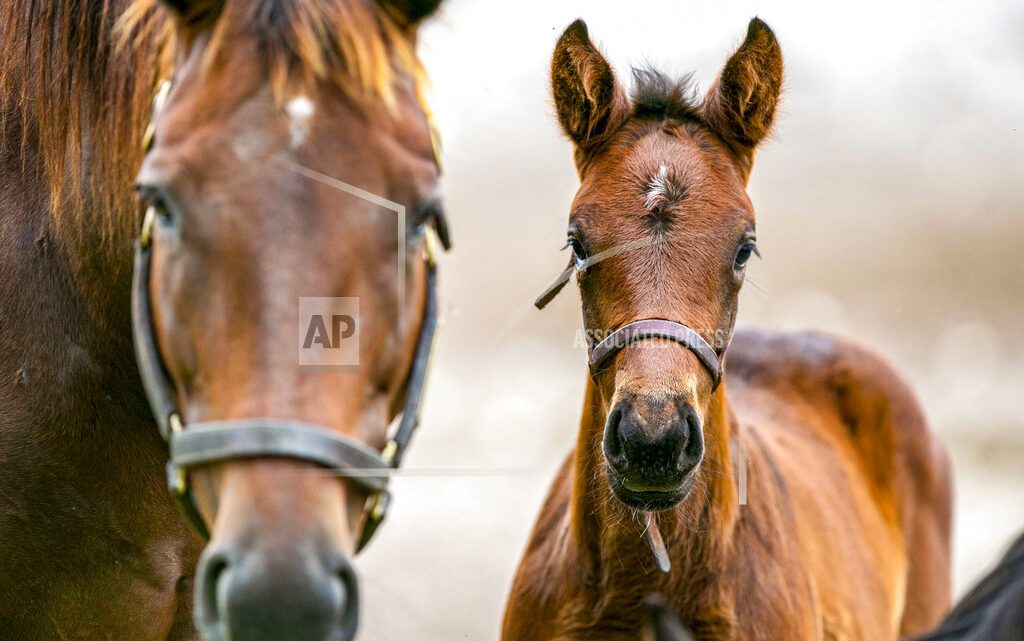Thoroughbred breeding numbers continue to fall in Florida
By CARLOS E. MEDINA , Ocala Star-Banner
OCALA, Fla. (AP) — In the past decade, breeding of racing thoroughbreds continues to consolidate in Kentucky, leaving other states, including Florida, to fight over a smaller piece of a shrinking pie.
And for the first time in decades, the number of mares bred in Florida fell below 2,000 and stallions dropped below 100, according to the annual Jockey Club Fact Book that detailed breeding statistics for 2018.
It’s a long way from 1998, when Florida reported almost 6,500 mares bred and 320 stallions. The number of mares bred in Florida topped out in 2005 at almost 7,200. Then the roof caved in after the global financial crisis in 2008 and has yet to recover.
But in and around Marion County, the heart of the Florida thoroughbred industry, those who remain in the breeding business continue the fight.
Helen and Joe Barbazon keep adding stallions and breeding mares at their Pleasant Acres operation near Morriston.
“Joe and I believe that Florida is the best place to raise them. But it’s getting harder and harder for these Florida stallions to get the mares they need to be successful,” Helen Barbazon said. “It’s a tough game. We’ve got 10 stallions now, so we’re in it up to our ears.”
Ocala Stud, one of the breeding farms that put Ocala on the map, continues to produce foals and build up stallions. And there are dozens more with smaller stables keeping the state’s breeding industry going.
It’s a similar story across the country. California fell from almost 6,000 mares bred in the early 2000s to about 2,500 in 2018. Stallions fell from more than 400 to 149. Louisiana, New York and Maryland are all off sharply from their highs over the same period.
Only Kentucky, the traditional center of thoroughbred breeding, regained momentum after the financial crisis. The state maxed out at about 21,500 mares bred in 2007 but dropped to just more than 15,000 after the financial meltdown. It’s held steady at more than 17,000 mares bred since 2014, accounting for more than 54 percent of the number of mares bred in North America, according to the Jockey Club.
That’s way up from the 30 percent of mares bred nationally that Kentucky represented 20 years ago.
Steven Vickner, an economist specializing in the equine industry at the University of Louisville, said the thoroughbred industry reacts like any other product or commodity to supply and demand pressures.
“The supply of registered foals this year is a function of registered foals last year. Once you get on a trajectory there is an inertia, particularly in agricultural commodities, where it’s tough to change direction quickly,” Vickner said. “If Florida has been trending down there is this inertia that keeps pulling it down. If Kentucky is trending up there is this inertia that pulls it up. We see this in a lot of markets.”
What takes the thoroughbred industry longer to change directions is the time it takes to get a foal to market. From breeding to selling as a yearling it takes about two years.
“If real prices are declining and they determine what the supply will be in a couple of years then it’s not surprising to see the supply of registered foals go down,” Vickner said.
So what can turn it around? One of the major drivers of yearling prices is purses at the race track, he said.
2018 was the first time U.S. purses rose in six years. Purses rose to more than $1.1 billion, up more than 3.5 percent over 2017, according to the Jockey Club.
While it’s better than the steady declines seen since 2012, Vickner said after taking inflation into account, purses stayed mostly flat at best.
“I don’t know if that slight uptick in nominal purses in the United States is going to be an upward boost to real yearling prices. So that’s not going to give us that turning point that we want,” he said.
The number of races in the country is also a major driver of breeding. Races continue to drop in the United States, down more than half from 74,071 in 1998. In 2018 races fell another 1,100 from a year before to just more than 35,500, Jockey Club records show.
But there is some good news.
“We know we’re in a pretty boom economy right now. That would put upward pressure on real prices of yearlings and that would bode well in two years for the supply of registered foals. Will that offset the decline in real purses and the declining number of races? That’s yet to be seen,” Vickner said.
Another good sign was an increase in the average price of a yearling in 2018. The average rose substantially to $78,749 from $68,923 in 2017.
The amount wagered on racing is also on the rise. While the final 2018 numbers were not available in the Jockey Club report, the amount bet on horse racing has gone up every year since 2015 and hit more than $10.9 billion in 2017. In a separate report from Equibase, the racing industry’s official database, it reported the amount wagered in 2018 jumped to more than $11.2 billion. More wagering means higher purses.
In Florida, Gulfstream Park, the Ocala-based Florida Thoroughbred Breeders’ and Owners’ Association and the Florida Horsemen’s Benevolent and Protective Association also added $1 million total as extra awards earmarked for Florida-breds in 2017.
But for breeders like Barbazon, it’s a passion for that game that keeps them going.
“It’s a tough industry. It’s hard work. It’s heartbreaking sometimes. But we love it. We’ve done it all of our lives,” she said.
[livemarket market_name="KONK Life LiveMarket" limit=3 category=“” show_signup=0 show_more=0]


No Comment